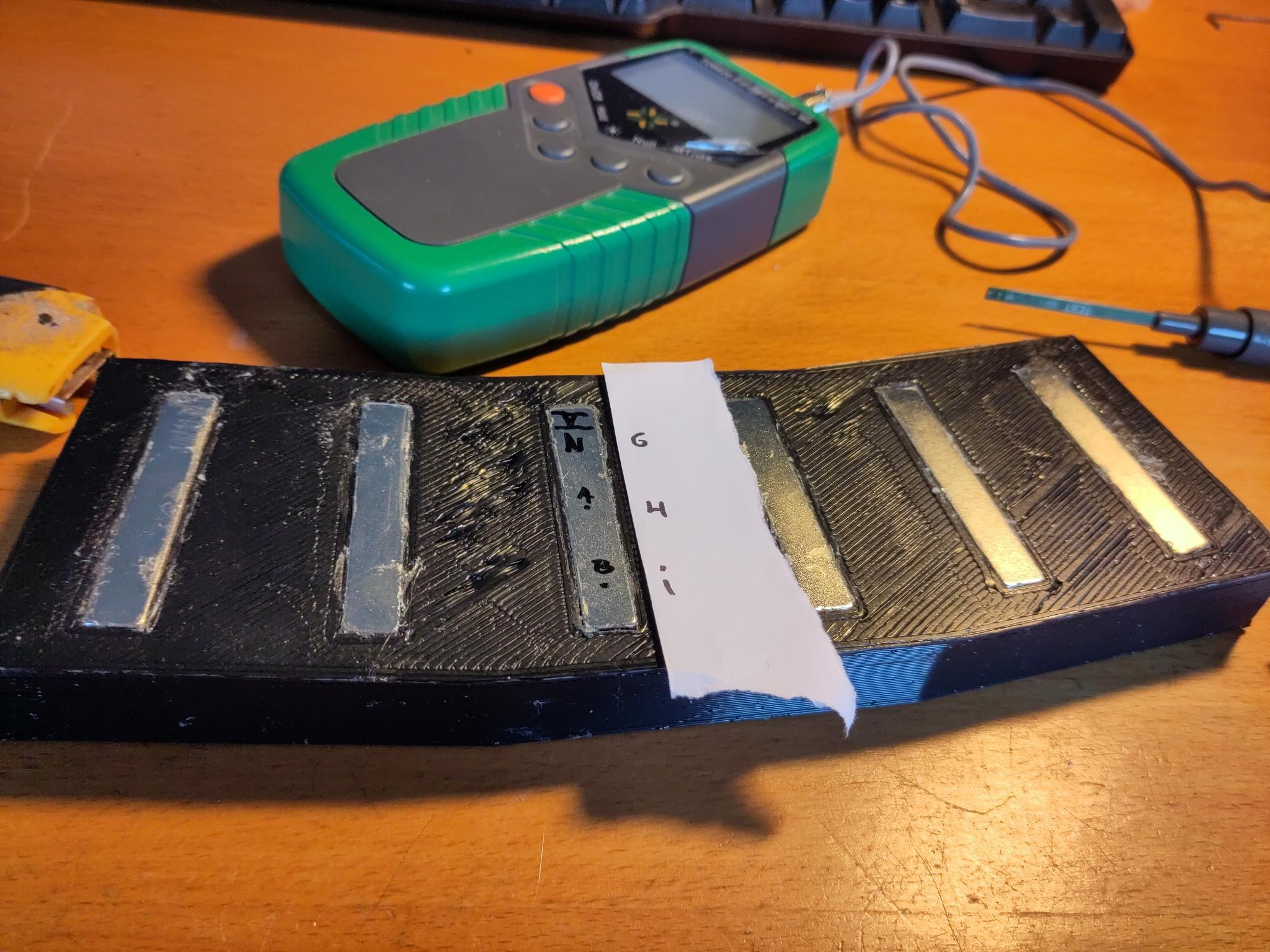So in the context of a dual magnet disk single coil: when using a non steel backed / non powdered array of single magnets of type N45 60x10x5 at an 3.75 degree interval and an inner radius of 600mm.
then any spacing between the upper and lower part of the magnet disks larger than 20mm seems to no longer make sense.
You see the field is so drastically better then. Almost no more side ways lines. For how I interpret the data I have the reduced coils space does less to reduce the voltage than the increase in voltage does by the field.
And as a bonus now we have less resistance in the coils because we can now reduce the coil length as now every turn counts more than it did before. This saves on the length thus resistance. Which will reduce the chance of overheating and in general will allow for higher amperage .
Reading on single magnet array with counter part 40mm distance (I ran out of spacers so could not simulate current coil width)
id field polarity surface measurement point distance (mm) milli tesla sensor angle increase over By %
V N top a 0 321 0 singe/array 1.26182965299685
V N tp b 0 338 0 singe/array 3.36391437308868
V N top a 10 72 0 singe/array 22.0338983050847
V N top b 10 70 0 singe/array 22.8070175438596
V N top a 20 39 0 singe/array 95
V N top b 20 38 0 singe/array 111.111111111111
V N g 0 14 0
V N g 17 3 0
V N h 0 18 0
V N h 17 8 0
V N I 0 17 0
V N I 17 4 0
Reading on single magnet array with counter part 30mm distance (with 300 winds / 600 turns this is as narrow as I can make the coil I think)
id field polarity surface measurement point distance (mm) milli tesla sensor angle
V N top a 0 324 0 singe/array 2.20820189274448
V N tp b 0 332 0 singe/array 1.52905198776758
V N top a 10 80 0 singe/array 35.5932203389831
V N top b 10 78 0 singe/array 36.8421052631579
V N top a 15 71 0 singe/array 108.823529411765
V N top b 15 66 0 singe/array 112.903225806452
V N I 0 17 0
V N I 17 2 0
Reading on single magnet array with counter part 20mm distance (I think the reduced space for coils is well made up and more by this increase in flux)
id field polarity surface measurement point distance (mm) milli tesla sensor angle
V N top a 0 337 0 singe/array 6.30914826498423
V N top b 0 346 0 singe/array 5.81039755351682
V N top a 10 132 0 singe/array 123.728813559322
V N top b 10 141 0 singe/array 147.368421052632
V N g 0 ~+0 0
V N g 10 ~+0 0
V N h 0 ~+0 0
V N h 10 ~+0 0
V N I 0 ~+0 0
V N I 10 ~+0 0
Next up is a stacked array and see if I can keep the space larger between magnets disks. You see I am not looking forward to the pull. It will bring engineering issues with it

Shoot, I forgot to send the reference photo.
